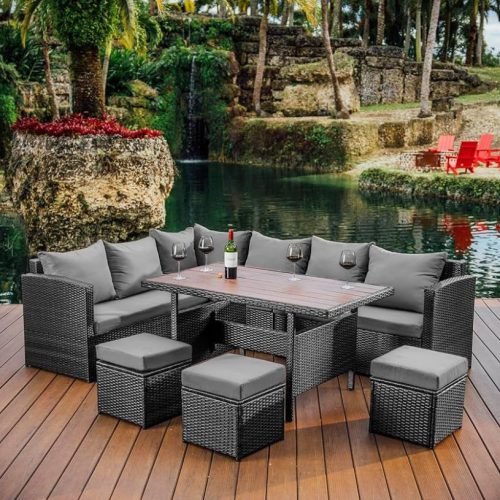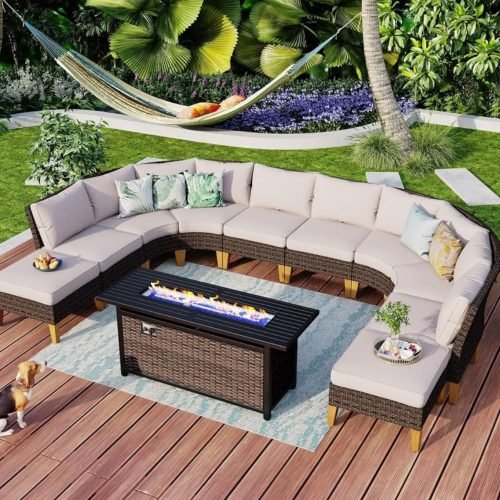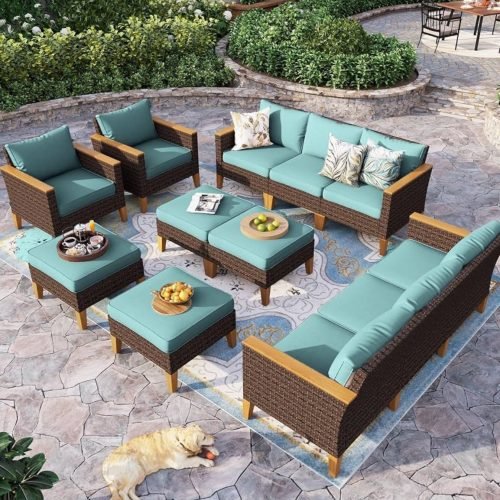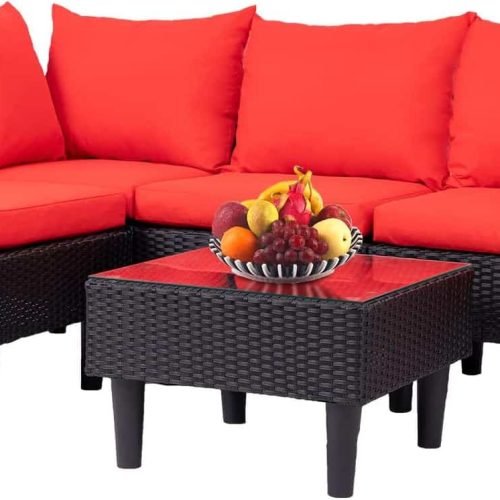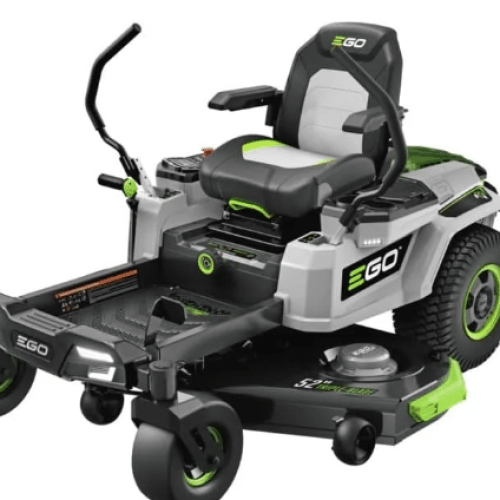Row covers are innovative tools for gardening. They protect plants from frost, pests, and too much sun. By using row covers right, you can make your garden better.
These tools help your plants grow well and stay healthy. They are great for small gardens and big farms. In this article, we’ll explore row covers. We’ll talk about their types, benefits, and how they can help your garden.
Row covers keep plants safe from frost and pests. They also help keep moisture in the garden. There are different types of row covers, each with its own level of protection.
Setting up row covers correctly is key to their success. They can also help plants grow longer in spring and fall. You can find good row covers at local garden stores and online.
Key Takeaways
- Row covers provide essential protection for plants against frost and pests.
- They help retain moisture and maintain humidity levels in the garden.
- Different types of row covers offer varying light transmission and protection levels.
- Setting up row covers correctly makes a significant difference in their effectiveness.
- Row covers can extend growing seasons in both spring and fall.
- Quality row covers are available at local garden centers and online retailers.
Understanding Row Covers and Their Benefits
Row covers are key to a successful garden. They protect plants from frost and pests. These sheets, made from garden fabric, keep plants safe during the growing season.
They work like a warm coat, keeping soil warm. This helps plants grow better in cooler weather. Lighter covers let in 85% to 95% of sunlight, helping young plants survive late frosts.
Thicker covers block more frost, protecting plants like tomatoes and strawberries. They also keep pests away, like aphids and beetles. This means less need for harmful chemicals.
Row covers also save water by reducing evaporation. They help plants stay hydrated. Plus, they can make the growing season longer, giving you more time to harvest.
It’s important to check on plants under the covers. This prevents overheating and stops diseases or pests.
Types of Row Covers Available
Knowing about the different row covers can really help your garden grow. These covers protect plants and help them grow. They come in two main types: floating row covers and supported row covers, also known as low tunnels.
Floating Row Covers
Floating row covers are thin, fabric layers that cover plants. They help keep your garden going by protecting against frost. They can even keep plants safe when it’s as cold as 28 degrees Fahrenheit.
These covers let 80% to 90% of sunlight through. This is great for young plants that need light. They also help keep the soil moist, which is good for seedlings.
To keep them in place, gardeners use rocks, soil, or sandbags. These covers can last 1-3 years, depending on how often you use them.
Supported Row Covers (Low Tunnels)
Supported row covers, or low tunnels, have hoops to cover plants. They let more air and sunlight in while keeping frost out. These covers can make it warmer under them, raising the temperature by 5-15 degrees Fahrenheit.
They are great for early spring or late fall. They help plants grow longer. The hoops also make it easy to get to your plants and keep animals away.
Using both floating and supported row covers can make your garden better. They help keep pests and frost away, leading to a healthy garden.
Row Covers: What To Use in the Garden and Why
Row covers are key for growing crops well. They protect against pests and frost. They also help plants grow better. Knowing how to use them can really improve your gardening.
Pest Exclusion
Row covers keep pests like aphids and beetles away. This means less damage to your crops. Sealing the edges to the ground makes them even more effective.
Frost Protection
Row covers can handle different levels of frost. Lighter ones let in more sunlight but protect less. Heavier ones block more frost but let in less light. Hoop-supported covers are best for keeping plants warm.
| Cover Type | Weight | Light Transmission | Frost Protection |
|---|---|---|---|
| Lightweight | 0.55 oz | 85% | Little to none |
| Medium-weight | Approximately 1.5 oz | 70% | Down to 28°F |
| Heavy-weight | Up to 3 oz | 60% | Down to 24°F |
Using row covers right can make plants grow faster. They protect against pests and cold. Finding the right balance will make your garden better.
Choosing the Right Fabric for Your Row Covers
Choosing the right material for row covers is key for plant health and gardening success. Different fabrics offer different levels of protection. Knowing the difference between lightweight and heavyweight covers helps you choose the best for your garden.
Lightweight vs. Heavyweight Covers
Lightweight covers, under 0.4 oz/sq yd, let in lots of sunlight and air. They’re great for keeping pests away while letting good bugs thrive. For example, Agribon AG-19 lets 85% of sunlight through and protects plants from frost down to 28°F. These covers help plants grow well and germinate fast.
Heavyweight covers, over 1 oz/sq yd, keep things warmer. They’re perfect for colder months. Agribon AG-30, for instance, keeps plants warm and protects them from frost down to 26°F. This helps plants grow longer into winter.
Insect Mesh and Bird Netting
It’s important to pick garden fabric that fights pests. Insect mesh and bird netting keep pests away. They let air and moisture in while stopping insects from reproducing. They also keep birds from eating ripe fruits.
When picking garden fabric, think about how much light it lets in, how warm it keeps, and how well it protects against pests. This careful choice lets gardeners adjust their plans for different weather and seasons.
How to Set Up Row Covers Effectively
Setting up row covers right is key to protecting plants and boosting their growth. It’s important to keep them stable against wind and other weather issues. Using the right anchoring methods and support systems makes row covers work better, helping plants all season long.
Anchoring Your Row Covers
Keeping row covers in place is vital to stop them from blowing away. There are several anchoring methods you can use:
- Use bricks or landscape staples to keep the edges down.
- Digging trenches around the edges can also help.
- For floating row covers, you can use soil on one side, but it might make harvesting harder.
Picking the best method can really help your row covers last longer. This way, you can enjoy their benefits even when the weather changes.
Using Hoops for Support
Hoops help keep row covers up and prevent them from sagging. This also makes sure plants get enough air. For the best results:
- Put fiberglass rods every two feet along the row.
- Hoops should cover the whole bed, about 4 feet wide.
- Make sure there’s at least 6 inches of extra row cover on all sides for securing.
These supports let plants get enough sunlight while keeping them safe from frost. Choosing the right support from local gardening stores helps them stand up to bad weather.
Using Row Covers for Season Extension
Row covers are a great tool for extending the gardening season. They help plants grow well even when it’s cold. Using them is key for spring garden protection and getting a better harvest.
Spring Growth Acceleration
In spring, row covers warm up the soil and protect from frost. Floating row covers keep it 4-5°F warmer. But, plants touching the cover might get a bit colder.
Hoop-supported row covers offer more protection, keeping frost off by up to 10°F. This is super important for early crops. With row covers, seedlings grow twice as fast as without them, starting the season strong.
Fall Harvest Protection
As it gets colder, row covers keep crops safe in the fall. They help vegetables ripen longer, letting gardeners harvest more. These covers can keep plants safe from 25°F.
Cold frames and greenhouses can extend the growing season by weeks. This means veggies keep growing into winter. Taking good care of row covers makes them last for years, a wise choice for any garden.
| Type of Row Cover | Frost Protection Range | Light Transmission | Optimal Crops |
|---|---|---|---|
| Floating Row Covers | 4-5°F | Up to 80% | Leafy Greens, Radishes |
| Hoop-Supported Row Covers | Up to 10°F | Up to 80% | Tomatoes, Cucumbers |
| Permanent Structures (Cold Frames) | 25°F | N/A | Root Crops, Herbs |
Implementing Row Covers for Pest Control
Using row covers in your garden can really help your crops grow better and use less chemicals. These covers keep pests away, helping your garden grow in a green way. Knowing how to use them can make your plants healthier and your garden more productive.
Maintaining Healthy Crop Growth
Row covers keep pests like aphids and cabbage loops away from your plants. They let in some light but keep out cold air. This helps your plants grow strong without needing chemicals.
Timing and Monitoring for Insects
Knowing when to take off row covers is key. For example, you should remove them from plants like tomatoes and peppers when they start to bloom. This lets bees and other insects pollinate them. Checking under the covers often helps you catch any pests early.
| Crop Type | Common Pests Excluded | Row Cover Effectiveness |
|---|---|---|
| Tomatoes and Peppers | Aphids, Cutworms, Flea Beetles | Prevents pest access and protects from early frost |
| Eggplants and Potatoes | Aphids, Colorado Potato Beetle, Flea Beetles | Reduces pest-related stress, enhancing yield |
| Cucumbers, Melons, Pumpkins | Aphids, Cucumber Beetles, Squash Bugs | Blocks key pests, allowing more vigorous crop growth |
| Broccoli, Cabbage, Cauliflower | Cabbage Maggots, Cutworms, Cabbage Loopers | Effective against adult butterfly and moth pests |
Using row covers smartly can make your garden healthier and more productive. It’s a great way to grow your plants in a way that’s good for the planet.
Where to Purchase Quality Row Covers
Finding the right row covers is key for gardeners to protect their plants. You can buy these supplies in local stores or online. Each place has its own benefits, so it’s important to think about what you need before you buy.
Local Garden Centers
Local garden centers are a top choice for row covers. They have many types to choose from, including different weights and materials. The staff can give advice based on your local climate and plants. Some good things about buying at local garden centers are:
- Accessibility: You can easily visit and check out products before buying.
- Community Support: Buying local helps your community.
- Tailored Advice: The staff can help find the best row cover for you.
Online Retailers for Gardening Supplies
Online shopping is great for those who like convenience. You can find many gardening supplies, including row covers, online. Online, you can compare products and read reviews from others. Prices for row covers vary, from cheap to expensive. Some important things to consider when buying online are:
- Variety of Choices: You can find many different types, sizes, and materials.
- Competitive Pricing: You might find deals, like $10 off orders over $90 with code AG10.
- Convenience: You can order online and have it delivered, saving you a trip.
Conclusion
Row covers are key for anyone wanting to succeed in gardening. They help with many issues, like keeping pests away and protecting from frost. Using row covers right makes sure plants do well, even in tough weather.
Adding row covers to your garden can lead to more crops and healthier plants. They help keep the right temperature and keep pests out. This makes gardening more sustainable and boosts the value of these tools.
Gardeners aiming for better yields and plant health should think about using row covers. Their benefits are huge, making them essential for gardening success. They help crops survive different weather conditions all year.
FAQ
What are row covers and how do they work?
Row covers are thin, fabric layers that protect plants from cold, pests, and too much sun. They create a warm, moist space around plants. This helps plants grow well by keeping them warm and moist.
What types of row covers are available for gardening?
There are a few types of row covers. Floating row covers are thin and placed right on plants. Supported row covers, or low tunnels, use frames to keep plants safe from cold and pests.
How do row covers contribute to pest control in the garden?
Row covers act as a barrier to keep pests like aphids away from plants. This method is safe for the environment and helps keep beneficial insects healthy.
When should I use row covers for frost protection?
Use row covers on cold nights in spring and fall to protect plants. They keep warmth in, protecting plants from frost and helping them survive cold weather.
What factors should I consider when selecting fabric weight for my row covers?
Think about your climate and plants when picking row cover weight. Lighter covers let in sunlight and control pests. Heavier covers keep plants warm in cooler weather.
How do I properly anchor row covers to ensure their effectiveness?
To keep row covers in place, use bricks, staples, or dig trenches. This keeps the fabric steady against wind and weather, protecting plants well.
Can row covers really accelerate spring growth?
Yes, row covers make a warmer spot for plants than the air around them. This helps plants grow faster. It’s great for planting early crops.
Where can I purchase quality row covers and gardening supplies?
Find good row covers at local garden stores or online. Local stores offer advice, and online shops have a wide range of gardening tools.
Source Links
- Use a Row Cover to Protect Your Garden & Plants | Bonnie Plants – https://bonnieplants.com/blogs/garden-fundamentals/row-cover-fabric-works-like-a-blanket-for-your-plants
- Row Covers: What To Use in the Garden and Why – https://gardenbetty.com/row-covers/
- How to Use Row Cover in Your Garden – https://sarabackmo.com/how-to-use-row-cover-and-garden-fabric/
- Mastering Frost and Pest Protection: The Ultimate Guide to Using Row Covers for Your Garden – https://discover.texasrealfood.com/homesteaders-toolbox/the-ultimate-guide-to-using-row-covers-for-frost-and-insect-protection
- Use of Plastic Mulch and Row Covers in Vegetable Production – Oklahoma State University – https://extension.okstate.edu/fact-sheets/use-of-plastic-mulch-and-row-covers-in-vegetable-production.html
- Reasons to Use Row Covers – https://www.almanac.com/reasons-use-row-covers
- Row Covers | University of Maryland Extension – https://extension.umd.edu/resource/row-covers
- Row Covers – https://extension.usu.edu/pests/research/row-covers
- 3 Uses for Row Covers in the Spring Garden – https://hudsonvalleyseed.com/blogs/blog/3-uses-for-row-covers-in-the-spring-garden
- Row Covers: A Gardening Season-Extender With Benefits – https://piedmontmastergardeners.org/article/row-covers-a-gardening-season-extender-with-benefits/
- Using Row Covers in the Veggie Garden – Veggie Gardening Tips – https://veggiegardeningtips.com/using-row-covers-in-the-veggie-garden/
- Fabric vs. Plastic: How to Choose the Right Row Cover for Your Garden – https://gardenbetty.com/fabric-vs-plastic-row-cover/
- Protect Your Plants with Garden Fabric 👨🌾 – https://www.gardeners.com/how-to/row-covers/5111.html?srsltid=AfmBOornFxod6F5qsnRHfwGH_0emB-41jTH_zyqm3jW3qAlnNWCzWVtk
- Protect Your Plants with Garden Fabric 👨🌾 – https://www.gardeners.com/how-to/row-covers/5111.html?srsltid=AfmBOoqmMMzu4w-98dq-umgnMFoCDuf7rJHpmBlUh-yt27eqOJxNhS5E
- Ask OGS: Quick, DIY Winter Row Covers | Organic Growers School – https://www.organicgrowersschool.org/blog/ask-ogs-quick-diy-winter-row-covers
- How Do Floating Row Covers Protect Plants From Frost? – Gardening Blog – https://www.groworganic.com/blogs/articles/the-science-of-why-floating-row-covers-work?srsltid=AfmBOooY570uVephIKeWoAQh7MSVmivOfbVWqPGEHsudaPnfijXbzlhd
- Season-Extending with Row Covers and Cold Frames | Gardener’s Supply – https://www.gardeners.com/how-to/season-extending-techniques/5063.html?srsltid=AfmBOoqiVBgLfuxEFkDmxsdkl1lPSQYnavw5TUrBnM7o_sNMe52p03U1
- Extend the Growing Season: Using Row Covers and Other Techniques – https://www.almanac.com/extending-growing-season-using-plastic-row-covers-and-other-techniques
- Using Row Covers in the Garden – https://extension.unh.edu/blog/2020/10/using-row-covers-garden
- Floating Row Cover – https://www.susansinthegarden.com/guides/organic-pest-control/organic-pest-control-products-methods/floating-row-cover/
- Wholesale Row Covers – https://www.profabricsupply.com/collections/wholesale-row-covers?srsltid=AfmBOorETocRZoAR6fMZBnh5HNfKoZ9NIc0-oI0GwSzW8YY1zrdXC2J1
- Garden Row Covers, Row Covers, Floating Row Cover Against Bugs | Gardenport – https://www.gardenport.com/collections/row-cover
- Buy PVA Row Covers – Extend Your Growing Season – https://www.thetarpco.com/row-covers?srsltid=AfmBOop2spZktfabMM2jAaRSnEPWjAnM_-z3tXmGuEoLNiHt0sjp5Nod
- What Is Row Cover And How And When To Use It – The Small Town Homestead – https://redemptionpermaculture.com/what-is-row-cover-and-how-and-when-to-use-it/
- Row Covers | University of Maryland Extension – https://extension.umd.edu/enst.umd.edu/agnr.umd.edu/resource/row-covers
- How Do Floating Row Covers Protect Plants From Frost? – Gardening Blog – https://www.groworganic.com/blogs/articles/the-science-of-why-floating-row-covers-work?srsltid=AfmBOoqGbsyIh4ntChxCR0qZBTajvXoxsP-suAYAumwzF968K1qAaYE3


